KENPAULLONE
Synonym(s):9-Bromo-7,12-dihydro-indolo-[3,2-d]-[1]benzazepin-6(5H)-one;9-Bromo-7,12-dihydroindolo[3,2-d][1]benzazepin-6(5H)-one, NSC-664704;Kenpaullone - CAS 142273-20-9 - Calbiochem;NSC 664704
- CAS NO.:142273-20-9
- Empirical Formula: C16H11BrN2O
- Molecular Weight: 327.18
- MDL number: MFCD02683595
- SAFETY DATA SHEET (SDS)
- Update Date: 2024-11-19 15:53:33
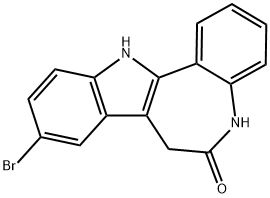
What is KENPAULLONE?
Description
Kenpaullone (142273-20-9) inhibits GSK-3β (IC50=0.23 μM) as well as several cyclin-dependent kinases (CDKs), IC50=0.4, 0.68 and 0.85 μM for cdk1, cdk2 and cdk5 respectively.1-3 Induces pluripotent stem cells from somatic cells4 and increases direct neural conversion of human fibroblasts5 when used with other small molecules. Inhibits Kruppel-Like Factor 4 (KLF4) reducing autoimmune arthritis in the collagen-induced arthritis mouse model.6
Chemical properties
Tan Solid
The Uses of KENPAULLONE
The paullones are a novel class of kinase inhibitors, initially identified as CDK inhibitors. Kenpaullone has been found to be a useful GSK-3?inhibitor (IC50=23nM).
The Uses of KENPAULLONE
The paullones are a novel class of kinase inhibitors, initially identified as CDK inhibitors. Kenpaullone has been found to be a useful GSK-3? inhibitor (IC50=23nM).
The Uses of KENPAULLONE
Kenpaullone has been used:
- as a glycogen synthase kinase 3 (GSK3)/ cyclin-dependent kinase (CDK) inhibitor to study its effects on human neural progenitor cell lines
- as an inhibitor of Krupple-like factor 4 (KLF4) in Gs-coupled designer GPCR (Gs DREADD= GsD) Agouti-related peptide (GsD-AgRP) mice
- as a GSK3/CDK inhibitor to study its effects on the sea urchin embryo development
What are the applications of Application
Kenpaullone is a Cdk and GKS-3 inhibitor
Definition
ChEBI: Kenpaullone is an indolobenzazepine that is paullone in which the hydrogen at position 9 is replaced by a bromo substituent. It is an ATP-competitive inhibitor of cyclin-dependent kinases (CDKs) and glycogen synthase kinase 3beta (GSK3beta). It has a role as a geroprotector, an EC 2.7.11.26 (tau-protein kinase) inhibitor, a cardioprotective agent and an EC 2.7.11.22 (cyclin-dependent kinase) inhibitor. It is an indolobenzazepine, a lactam and an organobromine compound. It is functionally related to a paullone.
General Description
A potent, cell-permeable, and reversible inhibitor of glycogen synthase kinase-3β (IC50 = 230 nM), Lck (IC50 = 470 nM), and cyclin-dependent kinases (Cdks). Inhibits Cdk1/cyclin B (IC50 = 400 nM), Cdk2/cyclin A (IC50 = 680 nM), Cdk2/cyclin E (IC50 = 7.5 μM), and Cdk5/p25 (IC50 = 850 nM). Also inhibits other kinases such as c-Src (IC50 = 15 μM), casein kinase II (IC50 = 20 μM), ERK1 (IC50 = 20 μM), and ERK2 (IC50 = 9 μM). Inhibition is competitive with respect to ATP binding.
Biological Activity
Potent inhibitor of CDK1/cyclin B and GSK-3 β (IC 50 values are 0.4 and 0.23 μ M respectively). Also inhibits CDK2/cyclin A, CDK2/cyclin E and CDK5/cyclin/p35 (IC 50 values are 0.68, 7.5 and 0.85 μ M respectively). Selective over c-src (IC 50 = 15 μ M), casein kinase 2 (IC 50 = 20 μ M), ERK1 (IC 50 = 20 μ M), ERK2 (IC 50 = 9 μ M) and a range of other protein kinases (IC 50 values > 35 μ M). Generates induced pluripotent stem cells (iPSCs) from somatic cells when used in combination with reprogramming factors; can replace Klf4.
Biochem/physiol Actions
Kenpaullone is also an inhibitor of glycogen synthase kinase 3β (GSK3β).?It also inhibits cyclin-dependent kinase 1 (CDK1/cyclin B), CDK2/cyclin A, CDK2/cyclin E, and CDK5/p25, majorly by competitive inhibition of adenosine triphosphate (ATP) binding.
storage
Room temperature
References
Zaharevitz et al. (1999), Discovery and initial characterization of the paullones, a novel class of small-molecule inhibitors of cyclin-dependent kinases; Cancer Res. 59 2566 Schultz et al. (1999) Paullones, a series of cyclin-dependent kinase inhibitor: synthesis, evaluation of CDK1/cyclin B inhibition, and in vitro antitumor activity; J.Med.Chem. 42 2909 Bain et al. (2003), The specificities of protein kinase inhibitors: an update; J. 371(Pt. 1) 199 Lyssiotis et al. (2009) Reprogramming of murine fibroblasts to induced pluripotent stem cells with chemical complementation of Klf4; Natl. Acad. Sci. USA 106 8912 Pfisterer et al. (2016), Small molecules increase direct neural conversion of human fibroblasts; Rep. 6 38290 Choi et al. (2018), Kruppel-Like Factor 4 Positively Regulates Autoimmune Arthritis in Mouse Models and Rheumatoid Arthritis in Patients via Modulating Cell Survival and Inflammation Factors of Fibroblast-Like Synoviocyte; Immunol. 9 1339
Properties of KENPAULLONE
| Melting point: | >300°C (dec.) |
| Boiling point: | 613.0±45.0 °C(Predicted) |
| Density | 1.596±0.06 g/cm3(Predicted) |
| storage temp. | 2-8°C |
| solubility | DMSO: 18 mg/mL, clear, yellow |
| form | Yellow-brown solid |
| pka | 14.29±0.20(Predicted) |
| color | yellow |
| Stability: | Stable for 2 years from date of purchase as supplied. Solutions in DMSO may be stored at -20°C for up to 1 month. |
| CAS DataBase Reference | 142273-20-9(CAS DataBase Reference) |
Safety information for KENPAULLONE
| Signal word | Warning |
| Pictogram(s) |
 Exclamation Mark Irritant GHS07 |
| GHS Hazard Statements |
H315:Skin corrosion/irritation H319:Serious eye damage/eye irritation |
| Precautionary Statement Codes |
P305+P351+P338:IF IN EYES: Rinse cautiously with water for several minutes. Remove contact lenses, if present and easy to do. Continuerinsing. |
Computed Descriptors for KENPAULLONE
| InChIKey | QQUXFYAWXPMDOE-UHFFFAOYSA-N |
New Products
4-AMINO-TETRAHYDRO-PYRAN-4-CARBOXYLIC ACID HCL 4-(Dimethylamino)tetrahydro-2H-pyran-4-carbonitrile 4-Aminotetrahydropyran-4-carbonitrile Hydrochloride (R)-3-Aminobutanenitrile Hydrochloride 3-((Dimethylamino)methyl)-5-methylhexan-2-one oxalate 1,4-Dioxa-8-azaspiro[4.5]decane 5-Bromo-2-nitropyridine Nimesulide BP Aceclofenac IP/BP/EP Diclofenac Sodium IP/BP/EP/USP Mefenamic Acid IP/BP/EP/USP Ornidazole IP Diclofenac Potassium THOMAIND PAPER PH 2.0 TO 4.5 1 BOX BUFFER CAPSULE PH 9.2 - 10 CAP SODIUM CHLORIDE 0.1N CVS ALLOXAN MONOHYDRATE 98% PLATINUM 0.5% ON 3 MM ALUMINA PELLETS (TYPE 73) LITHIUM AAS SOLUTION 2-Bromo-1-(bromomethyl)-3-chloro-5-nitrobenzene 2-Bromo-3-nitroaniline N-(3-Hydroxypropyl)-N-methylacetamide 3-Bromo-6-chloropyridazine 4-ethyl-3-nitrobenzoic acidRelated products of tetrahydrofuran
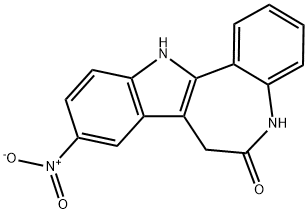

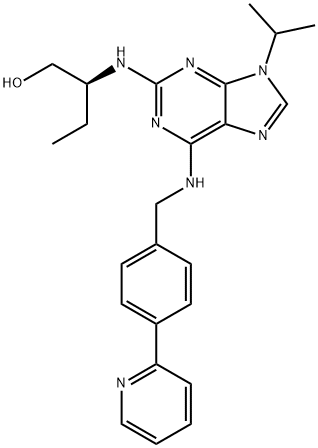
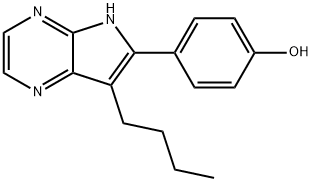
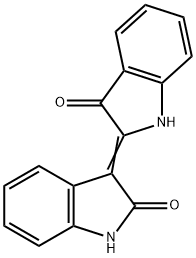
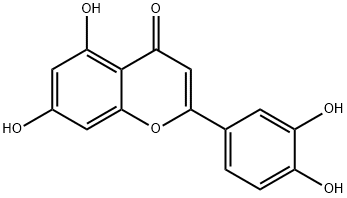
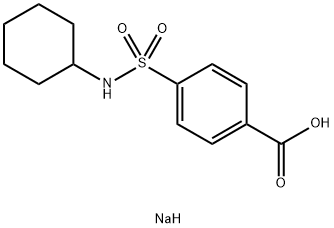
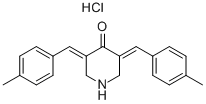
You may like
-
 Kenpaullone CAS 142273-20-9View Details
Kenpaullone CAS 142273-20-9View Details
142273-20-9 -
 Kenpaullone CAS 142273-20-9View Details
Kenpaullone CAS 142273-20-9View Details
142273-20-9 -
 Kenpaullone CAS 142273-20-9View Details
Kenpaullone CAS 142273-20-9View Details
142273-20-9 -
 1823368-42-8 98%View Details
1823368-42-8 98%View Details
1823368-42-8 -
 2-(3-(tert-butyl)phenoxy)-2-methylpropanoic acid 1307449-08-6 98%View Details
2-(3-(tert-butyl)phenoxy)-2-methylpropanoic acid 1307449-08-6 98%View Details
1307449-08-6 -
 Ethyl 3-(furan-2-yl)-3-hydroxypropanoate 25408-95-1 98%View Details
Ethyl 3-(furan-2-yl)-3-hydroxypropanoate 25408-95-1 98%View Details
25408-95-1 -
 2-Chloro-5-fluoro-1-methoxy-3-methylbenzene 98%View Details
2-Chloro-5-fluoro-1-methoxy-3-methylbenzene 98%View Details
1805639-70-6 -
 Lithium ClavulanateView Details
Lithium ClavulanateView Details
61177-44-4